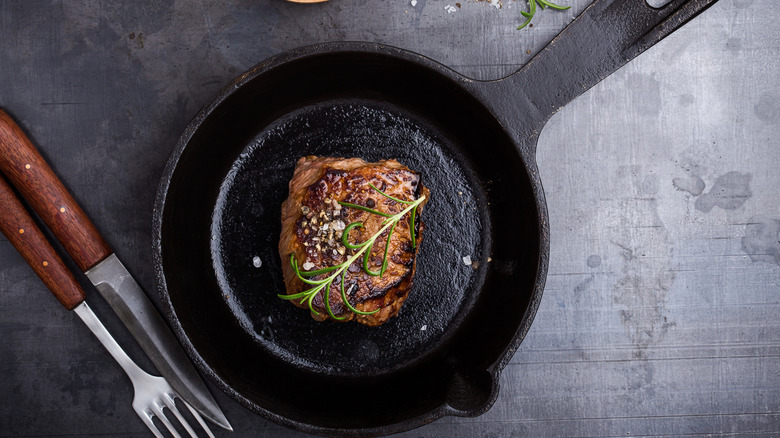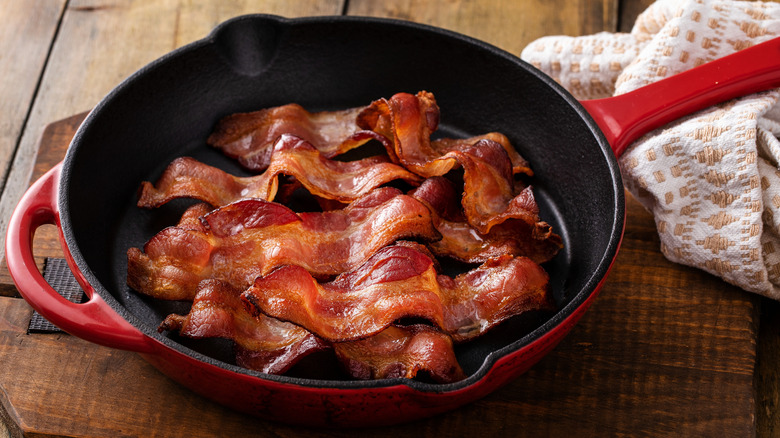The Cast Iron Skillet Myth You Need To Stop Believing
We may receive a commission on purchases made from links.
Cast iron pans come with something of a longstanding folklore, thanks to associated rules on how best to use and maintain them. For instance, you should always dry your cast iron with a paper towel, rather than letting it air dry, and try to avoid cooking marinated meat whenever possible (though some acid won't ruin your cast iron entirely). Adding to cast iron's widely debated standards is yet another guideline, but it's one that isn't actually true. Cast iron pans have long been praised for evenly heating food, but, in reality, they do no such thing.
Cast iron pans are, in fact, notorious for unevenly heating food; the material is poor at transferring heat across the surface. It's also extremely slow to warm up, thanks to its low heat conductivity. That means the pan will get hot in the areas where it's directly over the stove, whereas areas on the pan's perimeter won't heat to the same level. For comparison, pans that are aluminum or stainless steel — such as Cuisinart's 10-inch skillet — tend to heat more efficiently and evenly than cast iron.
Yet while cast iron isn't great at heating food evenly, the material's surface has other advantages in how it retains heat. So, the next time you pull out your trusty old cast iron pan, you don't have to worry about losing any warmth.
Plan ahead with cast iron before starting to cook
Cast iron pans' ability to stay hot once heated up ensures your food has enough time to cook all the way through and means you can use cast iron to your advantage. That is, so long as you choose the right foods — and preheat your pan ahead of time.
In general, it's a great idea to preheat a cast iron pan roughly 10 minutes ahead of using it. Sure, this step may require extra time and planning, but once warm, your cast iron pan should be good to go for however long you need it.
Given these attributes, you'll also want to choose foods that cook well on high, consistent heat. Meat, especially, thrives in cast iron pans, which is why they're great for searing steaks. Stir-fry recipes and ultra-crispy vegetables also fare well on the material for the same reason. You just may want to buy a pan handle cover (they come in leather as well as washable silicone) so you can endure the heat of the metal when holding it.

